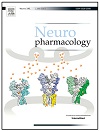Latest Publications
LIRcentral : a manually curated online database of experimentally validated functional LIR-motifs
 Chatzichristofi, Agathangelos, Sagris, Vasileios, Pallaris, Aristos, Eftychiou, Marios, Kalvari, Ioanna, Price, Nicholas, Theodosiou, Theodosios, Iliopoulos, Ioannis, Nezis, Ioannis P. and Promponas, Vasilis J
Chatzichristofi, Agathangelos, Sagris, Vasileios, Pallaris, Aristos, Eftychiou, Marios, Kalvari, Ioanna, Price, Nicholas, Theodosiou, Theodosios, Iliopoulos, Ioannis, Nezis, Ioannis P. and Promponas, Vasilis J
Several selective macroautophagy receptor and adaptor proteins bind members of the Atg8 (autophagy related 8) family using short linear motifs (SLiMs), most often referred to as Atg8-family interacting motifs (AIMs) or LC3-interacting regions (LIRs). AIM/LIR motifs have been extensively studied during the last fifteen years, since they can uncover the underlying biological mechanisms and possible substrates for this key catabolic process of eukaryotic cells. Prompted by the fact that experimental information regarding LIR motifs can be found scattered across heterogeneous literature resources, we have developed LIRcentral (https://lircentral.euLink opens in a new window), a freely available online repository for user-friendly access to comprehensive, high-quality information regarding LIR motifs from manually curated publications. Herein, we describe the development of LIRcentral and showcase currently available data and features, along with our plans for the expansion of this resource.
Reduced cingulate gyrus volume in Cavalier King Charles Spaniels with syringomyelia and neuropathic pain revealed by voxel-based morphometry: a pilot study
 Björn Nitzsche, Sabine Schulze, Johannes Boltze, Martin J. Schmidt
Björn Nitzsche, Sabine Schulze, Johannes Boltze, Martin J. Schmidt
Pathomorphological alterations of the central nervous system in dogs, such as syringomyelia and Chiari-like malformation, can cause cranial and cervical hyperesthesia and neuropathic pain. The long-term activity of the pain network can induce functional alteration and eventually even morphological changes in the pain network. This may happen especially in the prefrontal and cingulate cortex, where atrophy of the gray matter (GM) was observed in humans with chronic pain, irrespective of the nature of the pain syndrome. We tested the hypothesis that Cavalier King Charles Spaniels (CKCS) with Chiari-like malformation and associated syringomyelia (SM) and pain show cerebral morphological differences compared to animals without signs of syringomyelia and pain. We found that GM atrophy in the CG is associated with chronic pain and thus may serve as an objective readout parameter for the diagnosis or treatment of canine pain syndromes.
Antagonism of P2X7 receptors enhances lorazepam action in delaying seizure onset in an in vitro model of status epilepticus
 Monica Garcia-Durillo and Bruno. G. Frenguelli
Monica Garcia-Durillo and Bruno. G. Frenguelli
Approximately 30% of patients with status epilepticus (SE) become refractory to two or more antiseizure medications (ASM). There is thus a real need to identify novel targets to develop new ASMs for treating this clinical emergency. This study evaluated the effect of the selective P2X7R antagonist A740003 on acute seizures in the dentate gyrus (DG) of hippocampal brain slices, where P2X7Rs are highly expressed, with a view to establishing its potential use as a therapy or adjunct with lorazepam (LZP) in refractory SE.. Our study revealed that, in the absence of changes in mRNA for P2X7Rs or inflammatory markers, P2X7R antagonism did not alter the frequency of SLEs. However, A740003 in conjunction with LZP delayed the onset of seizures. Furthermore, our results support the need for employing LZP before seizures become refractory during SE (i.e., in the 60 min frame since first seizure appears) as delayed of application LZP increased seizure frequency. These studies reveal possible sites of intervention that could have a positive impact in patients with high risk of suffering SE or its drug-refractory variant.
Illuminating the brain : revealing brain biochemistry with synchrotron x-ray spectromicroscopy
 Everett, James, Brooks, Jake, Lermyte, Frederik, Tjendana Tjhin, Vindy, Hands-Portman, Ian, Hill, Emily, Collingwood, Joanna F. and Telling, Neil D.
Everett, James, Brooks, Jake, Lermyte, Frederik, Tjendana Tjhin, Vindy, Hands-Portman, Ian, Hill, Emily, Collingwood, Joanna F. and Telling, Neil D.
The synchrotron x-ray spectromicroscopy technique Scanning Transmission X-ray Microscopy (STXM) offers a powerful means to examine the underlying biochemistry of biological systems, owing to its combined chemical sensitivity and nanoscale spatial resolution. Here we introduce and demonstrate methodology for the use of STXM to examine the biochemistry of the human brain. We then discuss how this approach can help us better understand the biochemical changes that occur during the development of degenerative brain disorders, potentially facilitating the development of new therapies for disease diagnosis and treatment.
Tau in cerebrospinal fluid induces neuronal hyperexcitability and alters hippocampal theta oscillations
 Jessica Brown, Elena Camporesi, Juan Lantero-Rodriguez, Maria Olsson, Alice Wang, Blanca Medem, Henrik Zetterberg, Kaj Blennow, Thomas K. Karikari, Mark Wall and Emily Hill
Jessica Brown, Elena Camporesi, Juan Lantero-Rodriguez, Maria Olsson, Alice Wang, Blanca Medem, Henrik Zetterberg, Kaj Blennow, Thomas K. Karikari, Mark Wall and Emily Hill
Alzheimer’s disease (AD) and other tauopathies are characterized by the aggregation of tau into soluble and insoluble forms (including tangles and neuropil threads). In humans, a fraction of both phosphorylated and non-phosphorylated N-terminal to mid-domain tau species, are secreted into cerebrospinal fluid (CSF). Some of these CSF tau species can be measured as diagnostic and prognostic biomarkers, starting from early stages of disease. Here, we have developed and applied a novel approach to examine the electrophysiological effects of CSF from patients with a tau-positive biomarker profile. We demonstrate that CSF-tau mediates an increase in neuronal excitability in single cells. We then observed, at the network level, increased input–output responses and enhanced paired-pulse facilitation as well as an increase in long-term potentiation. Finally, we show that CSF-tau modifies the generation and maintenance of hippocampal theta oscillations, which have important roles in learning and memory and are known to be altered in AD patients. Together, we describe a novel method for screening human CSF-tau to understand functional effects on neuron and network activity, which could have far-reaching benefits in understanding tau pathology, thus allowing for the development of better targeted treatments for tauopathies in the future.
